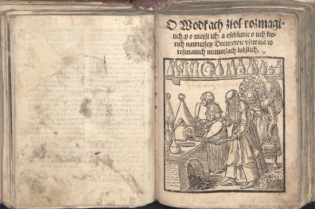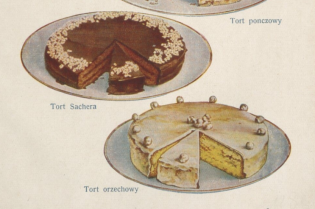Krakow cuisine: maczanka, liptauer and sandwiches
To unearth the culinary heritage of Krakow, we need to go back to the times of the Austro-Hungarian Empire - says food journalist Magdalena Kasprzyk-Chevriaux.
Magda Wójcik: Does such a thing as Krakow cuisine actually exist?
Magdalena Kasprzyk-Chevriaux: There is no easy answer. Many historians have a problem with talking about national cuisines. It is easier to talk about local cuisine, but we still need to bear in mind that in this part of Europe, it was always a cuisine that was influenced by many different cultures. It is certainly easier to talk about Krakow cuisine than the culinary traditions of Warsaw. But it is not easy. The sadly late Leszek Horwath always remarked that we have very few traditional Krakow dishes. There are a few exceptions though. One of them is maczanka (a pulled pork sandwich)
Where do we start if we want to research Krakow’s cuisine?
In my view, to unearth the culinary heritage of Krakow we need to go back to the times of the Austro-Hungarian Empire. Dust off long-forgotten recipes such as the one for liptauer spread. My dad recalls it was served by New York Jews, but it really is a typical dish from our region. The name comes from the German version of the name Liptov, a region in northern Slovakia. Traditional liptauer was made of bryndza (sheep’s milk cheese), but today it is much more common to use skimmed milk quark. In the Habsburg era, bryndza from Liptov enjoyed widespread fame. Liptauer itself is known today under different names: körözött in Hungary, - šmirkás in Slovakia, - liptovská pomazánka in Czechia, - urnebes in Serbia, - liptauer in Austria and Germany and - spuma di formaggio all'ungherese in northern Italy (here bryndza is replaced by ricotta and Stracchino cheese). Other forgotten flavours include Krakow grouts (untoasted crushed buckwheat grouts), Krakow-style duck, celtuce, mamaliga cornmeal porridge...
Which dish in your opinion is the one most worth reviving?
Sandwiches! It is still an untapped opportunity. Krakow has always been renowned for its sandwiches. There were many stories about traditional sandwiches but the most famous was the multi-tier sandwich sold at Hawełka. Yet no dining establishment in Krakow offers serious sandwiches with truly deluxe ingredients.
Where to look for old recipes?
Most of them are still kept at home. Every respectable Krakow family have several recipes that are passed from generation to generation. From a researcher's point of view, the most precious knowledge is written down in such recipe notebooks kept at home. Records of typical Krakow dishes crop up in accounts of chefs from other countries. Recently I was contacted by a researcher who had been browsing through old notes and cookery books and found some information about Cracoviens schnitzel - veal meatballs with Parmesan and gravy. This specialty was mentioned, among others, in the notes of the chef cooking at Kliczków castle for the count of Solms-Baruth dated 1790. The chef's name was Roessler. We do not know much about him, but he must have been well-educated.
The recipe is as follows: 1 kg veal, 4 medium-sized onions, 3 eggs, 500 g breadcrumbs, 50 g grated Parmesan cheese, clarified butter, a bunch of chopped parsley, 3 tablespoons of butter, salt and pepper. Coarsely grind the meat or dice it finely. Grate two onions and finely chop the other two, add the meat. Season the meat with salt and pepper, mix thoroughly. Form the meat into walnut-sized balls, coat with egg mixed with breadcrumbs and Parmesan. Fry in clarified butter until golden brown. Serve with parsley stir fried in butter for 2-3 minutes.










